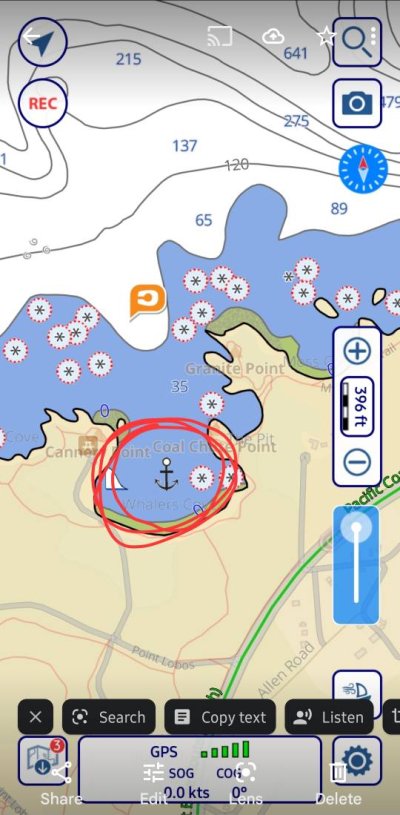jhance
Senior Member
1. I see a lot of boaters come into an anchorage, drop what seems to be no more than 50'-60' of all chain or chain/rope combo in ~20' of water and not really set their anchor at all. They seem to call it a day after backing down on it at idle at best with no real effort to set the anchor. What am I missing? How can someone sleep without setting their anchor? OK maybe they are relying on 50' of chain, but why do most people seem to not really set their anchor? Thank you for the courtesy of a short scope, but why not set your anchor at 5:1 properly, then decrease your scope after anchor is set?
2. I have a Camano Troll 31' w/ 200hp Volvp Penta TAMD41P-A. Idle is maybe 800 RPM, Max is 3800 RPM. At what RPM might you all recommend in reverse to set the anchor?
3. When I drop my anchor in any wind, the bow of my boat immediately blows off course and wants to be downwind. While I am paying out rode in reverse, my options to keep the bow pointing toward the wind are A. via FWD rudder/power and/or bow thruster, B. let the rode straighten the bow as I am reversing, or C. Just pay out all the rode even if the bow is sideways. All of these options have problems: A. constantly on the thruster or having to stop making reverse way for power/rudder adjust; B. Rode can straighten the bow, but I am concerned about pulling on the anchor before proper scope has been reached. My fear is that the anchor won't dig in with only a 1:1 or 2:1 scope, when I start letting the rode straighten the bow, and may get fouled with seaweed/other and make it ultimately harder to dig in even when proper scope is reached. Maybe coincidence, but each time I have tried this technique, my anchor never sets; C. Strain in the rope as it rubs improperly off the roller. Suggestions please!
2. I have a Camano Troll 31' w/ 200hp Volvp Penta TAMD41P-A. Idle is maybe 800 RPM, Max is 3800 RPM. At what RPM might you all recommend in reverse to set the anchor?
3. When I drop my anchor in any wind, the bow of my boat immediately blows off course and wants to be downwind. While I am paying out rode in reverse, my options to keep the bow pointing toward the wind are A. via FWD rudder/power and/or bow thruster, B. let the rode straighten the bow as I am reversing, or C. Just pay out all the rode even if the bow is sideways. All of these options have problems: A. constantly on the thruster or having to stop making reverse way for power/rudder adjust; B. Rode can straighten the bow, but I am concerned about pulling on the anchor before proper scope has been reached. My fear is that the anchor won't dig in with only a 1:1 or 2:1 scope, when I start letting the rode straighten the bow, and may get fouled with seaweed/other and make it ultimately harder to dig in even when proper scope is reached. Maybe coincidence, but each time I have tried this technique, my anchor never sets; C. Strain in the rope as it rubs improperly off the roller. Suggestions please!

